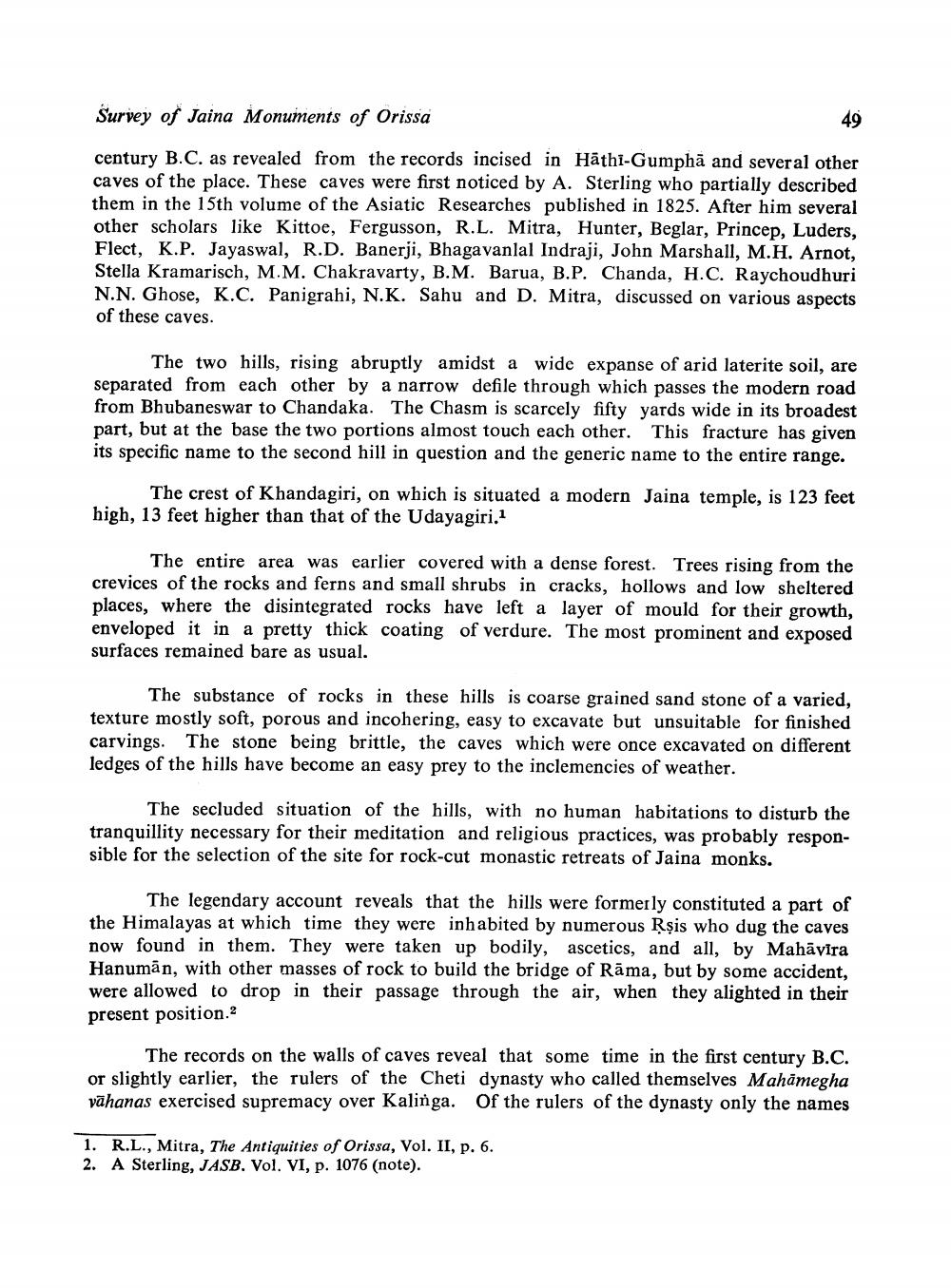________________
Survey of Jaina Monuments of Orissa
49
century B.C. as revealed from the records incised in Hāthi-Gumphā and several other caves of the place. These caves were first noticed by A. Sterling who partially described them in the 15th volume of the Asiatic Researches published in 1825. After him several other scholars like Kittoe, Fergusson, R.L. Mitra, Hunter, Beglar, Princep, Luders, Flect, K.P. Jayaswal, R.D. Banerji, Bhagavanlal Indraji, John Marshall, M.H. Arnot, Stella Kramarisch, M.M. Chakravarty, B.M. Barua, B.P. Chanda, H.C. Raychoudhuri N.N. Ghose, K.C. Panigrahi, N.K. Sahu and D. Mitra, discussed on various aspects of these caves.
The two hills, rising abruptly amidst a wide expanse of arid laterite soil, are separated from each other by a narrow defile through which passes the modern road from Bhubaneswar to Chandaka. The Chasm is scarcely fifty yards wide in its broadest part, but at the base the two portions almost touch each other. This fracture has given its specific name to the second hill in question and the generic name to the entire range.
The crest of Khandagiri, on which is situated a modern Jaina temple, is 123 feet high, 13 feet higher than that of the Udayagiri.1
The entire area was earlier covered with a dense forest. Trees rising from the crevices of the rocks and ferns and small shrubs in cracks, hollows and low sheltered places, where the disintegrated rocks have left a layer of mould for their growth, enveloped it in a pretty thick coating of verdure. The most prominent and exposed surfaces remained bare as usual.
The substance of rocks in these hills is coarse grained sand stone of a varied, texture mostly soft, porous and incohering, easy to excavate but unsuitable for finished carvings. The stone being brittle, the caves which were once excavated on different ledges of the hills have become an easy prey to the inclemencies of weather.
The secluded situation of the hills, with no human habitations to disturb the tranquillity necessary for their meditation and religious practices, was probably responsible for the selection of the site for rock-cut monastic retreats of Jaina monks.
The legendary account reveals that the hills were formerly constituted a part of the Himalayas at which time they were inhabited by numerous Rșis who dug the caves now found in them. They were taken up bodily, ascetics, and all, by Mahāyira Hanumān, with other masses of rock to build the bridge of Rāma, but by some accident, were allowed to drop in their passage through the air, when they alighted in their present position.
The records on the walls of caves reveal that some time in the first century B.C. or slightly earlier, the rulers of the Cheti dynasty who called themselves Mahāmegha vāhanas exercised supremacy over Kalinga. Of the rulers of the dynasty only the names
1. R.L., Mitra, The Antiquities of Orissa, Vol. II, p. 6. 2. A Sterling, JASB. Vol. VI, p. 1076 (note).




